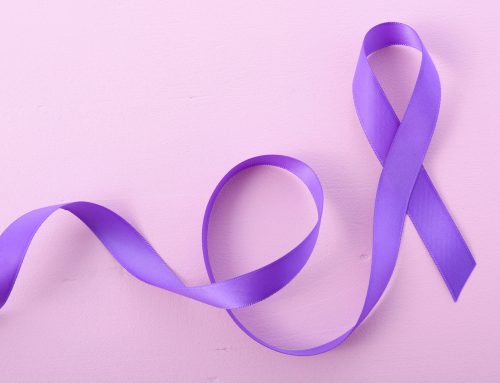
Some might think the two conditions are similar, but in reality, they are quite different. Migraines and cluster headaches have different symptoms and causes as well as require different treatments. Migraines are more common because they occur more frequently than cluster headaches. They are quoted as a general term to describe intense headaches in the media. According to the National Headache Foundation and American College of Physicians, more than 37 million Americans suffer from migraines and cluster headaches affect less than 1 million Americans.
Here are a couple questions to help you distinguish between the two headaches.
- Do you experience pulsating pain or pain on one side of the head?
People suffering from migraines often experience symptoms such as light and sound sensitivity, nausea, pulsating pain, and vomiting. Moreover, some can predict the onset of a migraine since the majority of sufferers experience visual disturbances (aura), such as zigzag lines, a brief loss of vision, or flashing lights.
On the other hand, people suffering from cluster headaches generally feel pain suddenly on one side of the head accompanied by a runny nose and/or a watery eye on the same side of the pain. Some may also experience red eyes, a droopy eyelid, swelling around the eye, and extreme sweating. Due to these symptoms, people often confuse cluster headaches with sinus headaches.
- Does the onset occur in the morning or at night?
Other differences lie in the causes and duration of each headache type. Hormonal imbalances are thought to play a key role in migraines, which explains the higher prevalence in women since they experience higher hormonal fluctuation. Other migraine triggers include abnormalities in sleep, weather, anxiety, depression, diet, stress, sudden noises or smells, bright lights, low blood sugar, and medication. Migraines occur mainly in the morning, and some sufferers can foresee the onset after milestone triggers.
On the contrary, studies suggest abnormal sleeping cycles might trigger of a cluster headache. These sudden headaches come in “clusters” intensifying five to ten minutes after the onset, and last at that intensity for up to three hours. Cluster headaches are shorter than migraines and sufferers tend to get these headaches one to three times a day. Most sufferers experience symptoms at night.
Interestingly, studies show that alcohol, smoking, head trauma, and genetic factors may trigger the onset of both types.
Now that you know the difference, treatment options for migraines and cluster headaches
Preventive treatments for both types of headaches rely on rescue medications at the start of a headache to keep the pain under control. Migraine medications include beta blockers, anti-seizure drugs, and antidepressants usually taken in pill form.
For cluster headaches, calcium channel blockers, non-invasive vagus nerve stimulation, antipsychotic drugs as well as high-flow oxygen and injectable triptans are used. These types of medication are often sprayed or injected to counter the severe bouts of intense pain. The high-flow oxygen mask receives the fastest results. Extreme cases of cluster headaches require surgery or electrical stimulation.
Learning to distinguish between different headache symptoms is a crucial part of therapy. There are many types of headaches with numerous different causes. It is always a good idea to consult a doctor to rule out other possible complications, such as a stroke or an internal injury.
Sources
https://www.ncbi.nlm.nih.gov/pubmedhealth/PMHT0024770/
Have you seen our research on Migraine Headache?
If you suffer from migraines or know someone who does, please take a moment to read our latest research.
- Share your knowledge about migraines by taking the Migraine Survey
- Discover triggers, symptoms, and treatments from our Migraine Community





I can’t stop appreciating you for this your wonderful product that completely get rid of my migraine headaches, Just wanted to let you know that I bought your product over 3 years ago and I’ve been migraine free since then. I used to have migraine headaches almost 2 to 4 times a week, so you could say I was dire to find a product that could eradicate my migraine permanently. To my amazement this product completely got rid of it. I’m so happy with the result! God will strengthen you more Dr SAMBOLA, If you ever need a spoke person, please let me know, I would be glad to speak on your behalf. P.S- I’ve recommended your product to friends and it worked for them too. Thank you again for such a wonderful product! Please permit me to drop your email address for those that want information about your herbal products sir, Whatsapp: +1(626)3404192, Email; [email protected]
I got a natural herbs medication that completely get rid of my migraine headaches from doctor sam, when I was trying to get the product from him initially I was thinking it might not work because I was told by several physicians that there’s no medication that can actually cure migraine headaches completely. But these herbs product work perfectly, for over 10 months now I haven’t had any pain like headache, which means it does the work, i usually had migraine headaches 2 to 3 times a week, but now I am perfectly okay, i just decided to write this short message for those of you that are thinking that all hopes is lost about their health situation please meet with Dr Sam, I promise you that you will share a positive story to those that are in need of help for their health situation, you can contact him directly on his email address or whatsapp number, +16263404192,,,, [email protected]
The way you have provided detailed tips, opinions, and discussions about Butalbital (FIORICET) and the guidance you provided, it’s imperative. Reading this post will make everyone feel better about “Headache”
A very informative article that helps to differentiate migraine from cluster headaches. Interestingly, cluster headaches have sub-types such as episodic cluster headaches that are separated by at least a month of headache-free intervals, and chronic cluster headaches that occur more than once a year without remission or the remission period is less than 1 month. If headaches are a constant source of trouble or long-lasting it is advisable to consult a neurologist without delay to get the appropriate treatment.
Neurologist Consultation Online – https://www.skedoc.com/vijayawada/neurologist